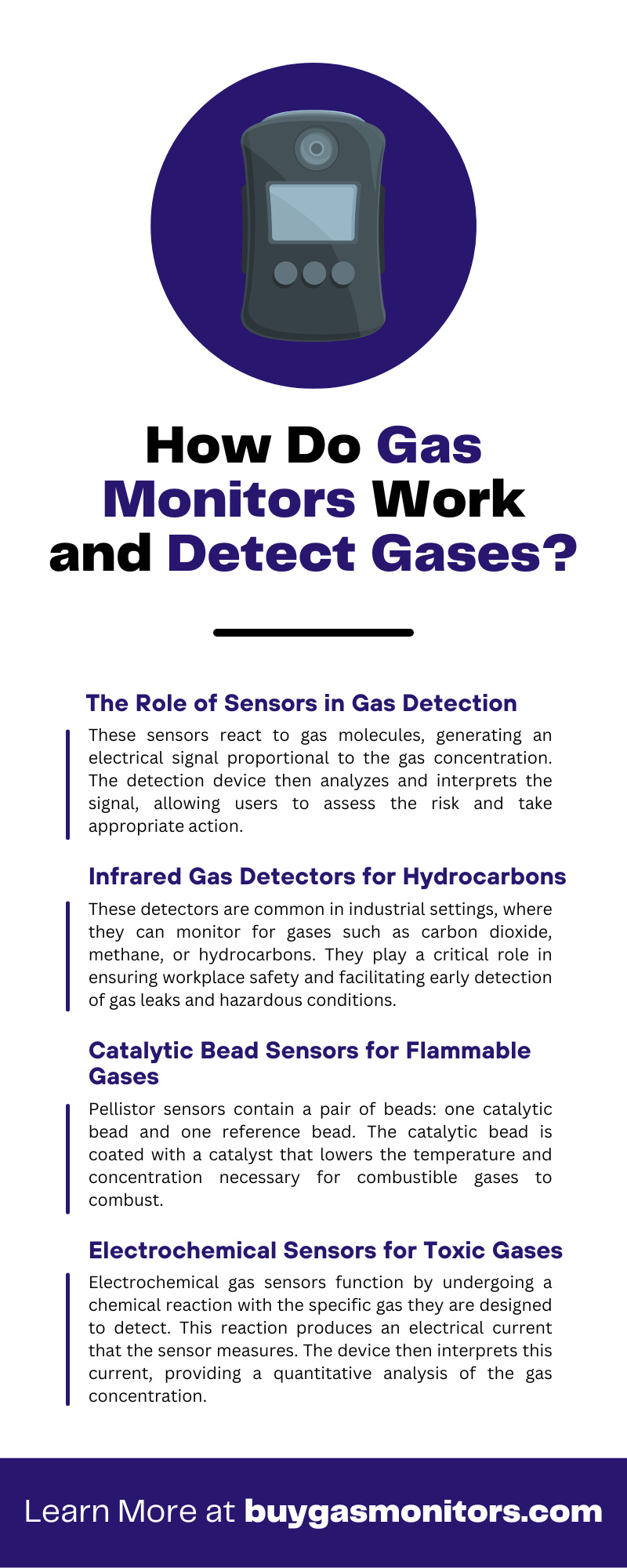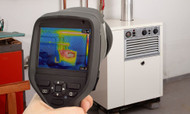How Do Gas Monitors Work and Detect Gases?
18th Dec 2023
Gas detection helps maintain safety and health standards in various environments, playing a crucial role in industrial facilities, confined spaces, oil refineries, and chemical plants, to name a few. Gas detection prevents potential disasters with early identification of gas leaks and hazardous conditions.
Gas detectors use different methods to measure gas concentrations because every gas has unique properties. Some gases absorb light at a specific wavelength, some gases are magnetic, and others have differing conductivity levels. Different measurement techniques make it easier to target changes in these unique properties, which is why gas detectors use different types of technologies. Explore these technological intricacies to understand how gas monitors work and detect gases.
The Role of Sensors in Gas Detection
A critical element in a gas monitor is the sensor, which identifies the presence of a target gas in the environment. These sensors react to gas molecules, generating an electrical signal proportional to the gas concentration. The detection device then analyzes and interprets the signal, allowing users to assess the risk and take appropriate action.
There are different types of sensors, each designed for specific gases. Single-gas monitors detect one target gas, while multi-gas detectors can detect multiple target gases.
Some common types of sensors include infrared detectors, catalytic bead sensors, electrochemical sensors, and photoionization detectors. The choice of sensor depends on the gas that needs monitoring and the specific application requirements.
Infrared Gas Detectors for Hydrocarbons
Infrared gas detectors detect and measure gaseous substances that may be harmful or hazardous to human health or the environment. These detectors are common in industrial settings, where they can monitor for gases such as carbon dioxide, methane, or hydrocarbons. They play a critical role in ensuring workplace safety and facilitating early detection of gas leaks and hazardous conditions.
The principle of operation for infrared gas detectors is based on the absorption of infrared radiation from gases. When gas molecules encounter infrared light, they absorb some of the light’s energy. Absorption alters the amount of radiation reaching the receiver, and the gas monitor calculates the concentration of hydrocarbon gas based on the absorbed infrared energy. The detector’s electronics can process this signal to trigger alarms.
The Danger of Hydrocarbons
Hydrocarbons, found in substances like petroleum and natural gas, pose significant risks due to their flammability, causing potential fire and explosion hazards. Prolonged exposure to certain hydrocarbons can also be harmful to health, leading to issues like respiratory distress, skin irritation, and even neurological effects in severe cases. Gas detectors are paramount in environments where hydrocarbons are present to monitor, detect, and alert personnel to the presence of these gases.
Catalytic Bead Sensors for Flammable Gases
The most common technology for detecting flammable gases is the catalytic bead sensor, also known as a pellistor sensor. Pellistor sensors contain a pair of beads: one catalytic bead and one reference bead. The catalytic bead is coated with a catalyst that lowers the temperature and concentration necessary for combustible gases to combust. The reference bead is not coated with a catalyst.
When the flammable gas contacts the catalytic bead, a chemical reaction occurs, generating heat and changing that bead’s resistance. Throughout this process, the reference bead maintains steady resistance. The sensor measures these changes, and the detector uses the data to determine the gas concentration.
The Risk of Flammable Gases
Flammable gases pose a significant threat. They can ignite or explode when mixed with air and exposed to an ignition source, resulting in catastrophic damage and potential loss of life. Moreover, some flammable gases are also toxic when people inhale them, causing detrimental health effects. Therefore, timely detection of these gases is critical to prevent accidents, safeguard individuals, and ensure a safe and healthy working environment.
Electrochemical Sensors for Toxic Gases
Electrochemical gas sensors function by undergoing a chemical reaction with the specific gas they are designed to detect. This reaction produces an electrical current that the sensor measures. The device then interprets this current, providing a quantitative analysis of the gas concentration. Through this process, the sensor can accurately determine the presence and level of certain gases in the environment.
Electrochemical Sensor Components
The electrochemical sensor comprises several parts that work together to detect and measure specific chemical substances. The key components are the sensing electrode, reference electrode, electrolyte liquid, and gas-permeable membrane.
The first component, the sensing electrode, interacts directly with the target substance. This interaction generates an electrical signal. The gas-permeable membrane covers the sensing electrode and controls the amount and type of gas molecules that reach the electrode.
The third component is the reference electrode, which provides a stable voltage against which the device can compare the sensing electrode’s signal. This comparison helps accurately determine the target substance’s concentration.
Finally, the electrodes are submerged in an electrolyte liquid, which facilitates the movement of ions between the sensing and reference electrodes. This ion movement is essential for the sensor’s operation. All together, these four components enable the electrochemical sensor to function effectively and deliver precise measurements.
Photoionization Detectors for VOCs
Photoionization detectors (PIDs) measure volatile organic compounds (VOCs). VOCs are a group of carbon-based chemicals that rapidly evaporate at room temperature, and they include formaldehyde, acetone, methane, and benzene. Exposure to these substances can pose severe health risks. Therefore, effective detection and monitoring of VOCs is crucial—that’s where PIDs come into play.
A PID uses a UV light source to ionize the target gas molecules present in the air sample. This process involves the UV light photon breaking down the VOC and forming ions. The detector then measures the charge of these ions to calculate the gas concentration.
PID Components
Two key components of a PID include the UV lamp and the ionization chamber. The lamp emits UV light, and the ionization chamber captures and measures ions. By tracking the current flow between the electrodes in the ionization chamber, the PID can accurately determine the concentration of VOCs in the environment.
Understanding how gas monitors function and detect gases highlights the importance of equipping your facility with the right device. The choice of technology, whether infrared sensors for hydrocarbons, catalytic bead sensors for flammable gases, electrochemical sensors for toxic gases, or photoionization detectors for VOCs, depends on the specific application and the gas in question. These devices’ precision and efficiency protect against potential disasters, making them indispensable in workplaces where hazardous gases present risks.


